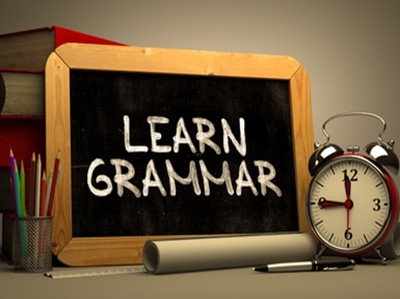【精选】SAT写作常用模板句型及重要词汇
- 2018年03月08日14:50 来源:小站整理
- 参与(0) 阅读(9445)
怒刷一波SAT写作常用模板句型,怎么看都不嫌多。考前多多背诵,慢慢积累,考场灵活发挥,何愁写不出好文章!小站教育特地为大家精选SAT作文资料,希望大家多多参考,多多运用。
1. Sentence
1.1 Sentence Structure
1) After the author’s presentation of his statistics and facts, he raises more concern about….
2) It would be more “genuine” and better informing for readers to hear of first hand experiences. The reader of his article begins to wonder how…
3) The author begins by clearly laying out the raw statistics from a census produced by … to show … In an attempt to point out these (adj.) facts, the author goes on to discuss the context of …
4) The author uses the truth, backed by reliable sources, to infiltrate the readers’ independent mind. His thoroughness in this regard carefully builds his argument against / supporting …, and this is just one of the many ways he spreads his opposition/opinion.
5) Examples and statistical presentations initially draw interest from readers. The author begins with a census from year … and year … that reveals ….
6) The author’s statistics cited throughout the article reinforce his argument and provide a solid base.
7) These statistics appeal to the reader’s logic and ensure that they can follow a logical path to support the author. The statistics provide solid evidence that are enhanced by the numbers and cannot be easily argued against.
8) The truth in the numbers is undeniable, and the author cites his sources, making the statement much more authentic.
1.2 Reasoning
9) The author’s use of logic occurs throughout his article, but is most prevalent in the beginning.
10) The author employs logic, basic reasoning and evidence presentation in order to raise concern, curiosity, and questions from the reader.
11) For reasoning, the author purposely uses evidence that is very relative to the common man or woman, especially relative to younger Americans by saying “....”
12) The author offers a possible reason for why…
13) The cogent chain of reasoning indicates an understanding of…
14) The author utilizes logical reasoning to not only expose the paucity of international news feeds, but also convince his audience that it is crucial that news organizations increase the amount of foreign news coverage provided to Americans.
1.3 Rhetorical skills
15) The author makes subtle yet efficient use of rhetorical questioning to persuade his audience that natural darkness preservation is essential.
16) After presenting the facts using logic, and making connections using reason, the author utilizes rhetoric to place the cherry on the top of his argument. Rhetoric is crucial in an argument because it determines how the reader feels after reading an article.
17) The author uses this irony—that …—to try to show sb. that this argument is …
18) By adjusting his diction (i.e……), the author creates something out of the ordinary.
19) Negative words with specifically poor connotations also aid author in his persuasive struggle. “…,” “…,” “…,” and “…” all depict a disparaging tone of annoyance and anger, surely helping the author to spread his message.
20) The author starts his article off by recounting a personal story – a summer spent on a Minnesota lake... In telling this brief anecdote, The author challenges the audience to remember a time...This anecdote provides a baseline of sorts for readers to find credence with the author’s claims.
21) The author’s argument is also furthered by his use of allusion to art...
22) The author’s sarcastic tone throughout the article conveys the conception that…
1.4 Appealing to emotion
23) The author is extremely persuasive in his argument when he brings pathos into effect. He uses pathos to appeal to the emotions of the readers. He plays out … by saying “… ” and “ … ” This information is used to show the reader why …
24) The author uses pathos and reasoning to persuade readers that … He plays on the readers’ emotions by talking about ….
25) The numbers themselves raise a concern in the audiences mind, but may not capture their attention. The author then presents more appealing examples, including… in order to further capture the reader’s attention and raise concern.
26) … heightens curiosity for the reader.
27) This excerpt creates another claim that leaves the reader wondering if …
28) This strategy is definitively an appeal to pathos, forcing the audience to directly face an emotionally-charged inquiry that will surely spur some kind of response. By doing this, the author develops his argument, adding guttural power to the idea that the issue of ….
29) The author’s patriotic asides in the first and final paragraphs appeal to the audience’s emotions and self-interests.
2. Essential Words
2.1 Synonyms of Credence
Legitimacy: lawfulness by virtue of being authorized or in accordance with law
Authoritativeness: the quality of being authority
Credibility: the quality of being believable or trustworthy
Authenticity: undisputed credibility
Persuasiveness: the power to induce the taking of a course of action or the embracing of a point of view by means of argument or entreaty
Convincingness: the power of argument or evidence to cause belief
Representativeness: the quality of being typical
Professional: characteristic of or be fitting a profession or one engaged in a profession
Potent: having great influence
2.2 Evidence
Publication: a copy of a printed work offered for distribution
Poll: an inquiry into public opinion conducted by interviewing a random sample of people
Commission: charge with a task
2.3 Rhetoric
Colloquialism: a colloquial expression; characteristic of spoken or written communication that seeks to imitate informal speech
Simile: a figure of speech that expresses a resemblance between things of different kinds (usually formed with `like' or `as')
Metaphor: a figure of speech in which an expression is used to refer to something that it does not literally denote in order to suggest a similarity
Comparison: examining resemblances or differences; relation based on similarities and differences
Analogy: drawing a comparison in order to show a similarity in some respect
Allusion: passing reference or indirect mention
Hyperbole: extravagant exaggeration
Anecdote: short account of an incident (especially a biographical one)
Rhetorical question: a statement that is formulated as a question but that is not supposed to be answered
Irony: incongruity between what might be expected and what actually occurs; witty language used to convey insults or scorn
Parallelism: similarity by virtue of corresponding
以上就是小站教育为大家精心挑选的SAT作文常见模板句型及关键词汇,祝大家在考试中取得好成绩。

























